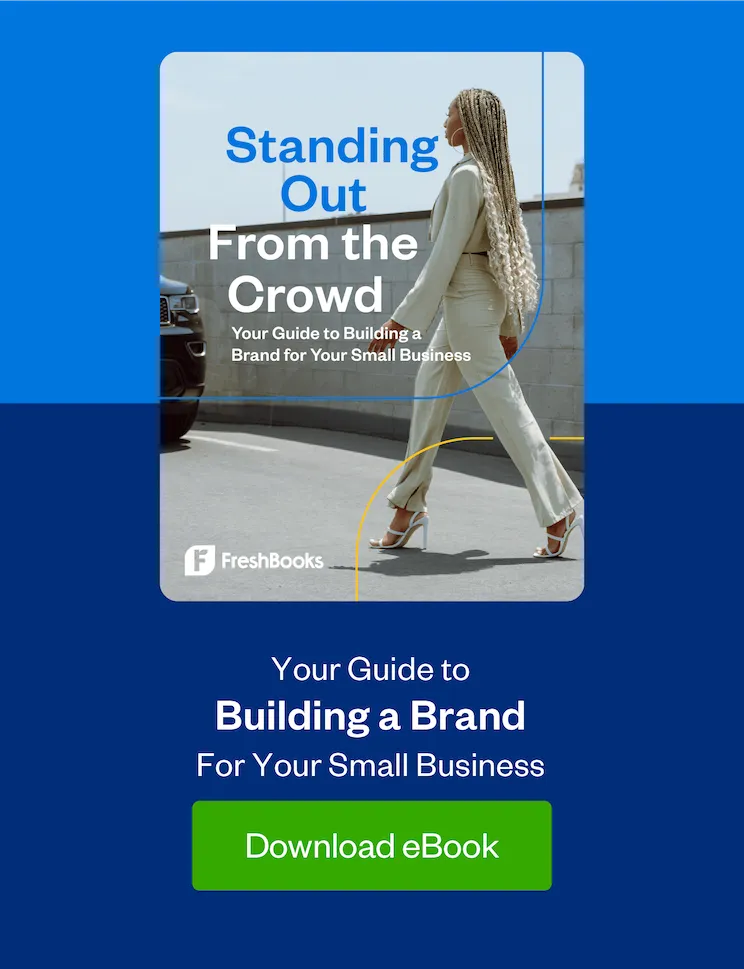Finding clients is equal parts art and science. Susan Varty helps break it down.

Susan Varty has been an entrepreneur since she was a teenager. Back in the day, she had a side gig going at all times, beginning with laying out brochures for real estate agents before desktop publishing was a thing. Seeking out ways to build new businesses was a hobby and a passion.
Among other entrepreneurial roles, today she’s a managing partner of HeadStart Copywriting, a firm that provides writing services to companies in need of support for their internal teams. Varty is also a co-founder of the Write Up North conference in Ontario. She’s a corporate writer but she mainly focuses on drumming up new business: “I go after the business and then I delegate the writing.”
We asked Varty to share 3 of her proven tips for finding clients and making your services stand out.
Table of Contents
1. Finding Clients: ‘Ideas First, Sell Later’
For service-based entrepreneurs, our lifeblood is our ideas. Give them away for free? That’s crazy talk! But Varty says giving prospects a taste of what you can do for them will help set you apart from your competition. It’s also a great way to introduce yourself to a client or company you want to work with.
“If you’re a graphic designer and someone posts on LinkedIn that they’re looking for help redesigning their home page, take five minutes to review their website, come up with a brief idea and offer it to them. Ask them if they’re free on Friday at 11 a.m. to discuss. Instead of pitching your services, you’re starting a conversation.”
No matter what type of service you provide, you can target a client or company, think about what they need that you can provide, and approach them with ideas.
As a writer, this has worked for Varty more times than she can count. “It’s how I got to write for The Globe and Mail, and lots of other publications. People don’t care about your bio, they want to know what you can do for them. Show them. That’s the most important thing.”
The follow-up is just as important as the pitch. Her advice is to be specific with a date and a time to have a phone call or video chat.
2. Finding Clients: Build Relationships Online and Offline
It’s easy to develop a business relationship exclusively through social media platforms like Twitter or LinkedIn. But how strong is that relationship?
If you’re really interested in landing a particular client, it’s important to meet face-to-face, even if it’s for a quick coffee. Of course, social distancing has made that hard. The next best thing: Video chats. There are a variety of platforms to use like Zoom, Skype, FaceTime, Google Hangouts, or WhatsApp.
The act of putting a face to a name makes you real in a way that emails simply can’t. You’re adding dimension to yourself that will pay off when you post on LinkedIn or send them an email. They’ll have a stronger memory and a clearer picture of you than if you’d just exchanged online written messages.
When cultivating a new business relationship this way, it’s important that your online persona matches your offline one. Be sure you have an updated photo on LinkedIn and that your professional summary matches your personality as much as possible. “It’s about exuding a consistent, executive presence. When you project your personality the same way online and offline, that’s reassuring and builds trust with potential clients,” said Varty.
3. Finding Clients: Use LinkedIn Wisely
Are you taking full advantage of LinkedIn? According to Varty, it offers prospecting gold. “It’s the go-to source for me. If you’re running a service business, you can get new business almost exclusively using LinkedIn.”
Here are some of her favorite tips for finding clients on LinkedIn:
Mine Company Pages
If you’re a B2B business, you can find out a lot from a company’s LinkedIn page. You can identify whether you have any contacts who could introduce you or make referrals within the company. The page will also indicate which other companies are like them.
“If I have a credit union for a client, I can go on their LinkedIn page and find out how many other credit unions are in my area, then I can look them up and see how many employees they have, and how many of my connections work there. It’s an ideal prospecting tool if you’re looking to get work that’s similar to what you’re already doing.”
Take LinkedIn Conversations to Email
Sending messages through LinkedIn is a good way to make first contact, but once you’ve done that, Varty advises taking it to email. “People usually check their email more regularly than LinkedIn messaging.”
Look at Job Postings
As an entrepreneur, you’re not in the market for a full-time position, but pay attention to the kinds of roles that provide similar services that you do. “If a company is hiring a copywriter or graphic designer, you know they have money to support that role. Reach out to them to see if you can provide interim support while they’re hiring. When they do hire, you’ll be on the top of the list if they need to outsource any work.”
Don’t Spam Your Connections
It’s smart to keep your connections in the loop about what you’re doing professionally, but it’s not okay to constantly post about your achievements. “Use LinkedIn to raise other people up as much as you promote yourself. Offer kudos, make connections, write encouraging comments to others. They’ll remember that and return the favor.”
Look for Hidden Opportunities
Sometimes companies give you more information than they intend to when they make announcements. For example, a director posting a welcome to three new hires is telling you that their company is growing and there may be opportunities to outsource work. The same goes for new launches overseas, mergers and acquisitions, expansion into new markets, and more.
For Varty, looking for new business is a way of life. She adapts her business planning and outreach practices to allow for business trends, industry changes, and new technology.
“Being organized, managing relationships, and looking for new opportunities should be on the daily agenda of every business.”
Conclusion
There’s no doubt that finding clients can sometimes be difficult. But there are lots of tools to help. From LinkedIn and other social media platforms to video calls, use these tools as much as possible to help you find your next client.
This post was updated in April 2020.

Written by Heather Hudson, Freelance Contributor
Posted on May 11, 2020
 How to Find and Land Repeat Clients for Your Business
How to Find and Land Repeat Clients for Your Business 5 Simple Steps to Getting Better Clients
5 Simple Steps to Getting Better Clients Asking for Referrals: How to Do It the Right Way
Asking for Referrals: How to Do It the Right Way
![Standing Out From the Crowd [Free eBook] cover image](https://www.freshbooks.com/blog/wp-content/uploads/2022/05/Standing-Out-From-the-Crowd_eBook-Blog-Hero-Image-226x150.png)




